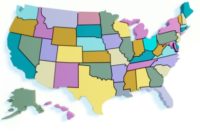Overview of OSHA
As many of you know, OSHA's mission is to assure safe and healthful working conditions for working men and women by setting and enforcing standards and providing training, outreach, education, and compliance assistance. With a budget of approximately $550 million, OSHA has a staff of 2,200, including about 1,100 inspectors. State plans have an additional 1,200 inspectors. Field activities are directed by ten regional administrators, who supervise approximately 85 local area offices throughout the United States. OSHA has approximately 350 staff in the National Office.
We are a small agency with a large mission -- ensuring the safety and health of roughly 130 million workers, employed in somewhere between 7 and 8 million workplaces all across the country. OSHA and its state partners are accomplishing the gains discussed above with relatively fewer personnel. In the late 1970s, there were about 36 federal and state compliance officers for every million covered workers. In the second half of the last decade, that ratio dropped below 20. Currently, there are less than 20 inspectors for every million covered workers.
With limited resources, we achieve this mission through a balanced approach, consisting of standards, enforcement, compliance assistance and outreach, and whistleblower protection.
Standards
OSHA's common sense standards have made working conditions in America today far safer than 44 years ago when the agency was created, without slowing the growth of American business. Developing OSHA regulations is a complex and long process, with extensive public consultation before any new standards are issued including, depending on the standard, requests for information, stakeholder meetings, Small Business Regulatory Enforcement and Fairness Act (SBREFA) panels, public hearings, and pre- and post-hearing comment periods. We are required by law to ensure that our standards are economically and technically feasible. Over the past few years, OSHA has finalized long-awaited standards to protect shipyard workers and electrical workers, a standard protecting workers from hazards associated with cranes and derricks, a confined spaces standard for construction workers, as well as a standard to harmonize chemical hazard communication with programs around the world. In addition, we finalized a rule expanding requirements for employers to notify OSHA when a worker is killed on the job, or suffers a work related hospitalization, amputation or loss of an eye.
We have made significant progress in protecting workers from exposure to silica dust which causes silicosis, renal disease, chronic obstructive pulmonary disease, and lung cancer. Silica has been known for hundreds of years to cause deaths and severe lung disease. Secretary of Labor Frances Perkins, more than 75 years ago, committed the country to eliminating silica related disease. Our current standards are over 40 years old and the overwhelming weight of science has shown these antiquated standards to endanger workers' health.
OSHA held three weeks of public hearings on our proposal last year, and accepted public comment on our proposal for almost a year. This critical update to the current standards will better protect workers and modernize inadequately protective, antiquated and difficult-to-use rules.
Enforcement
Earlier this year in Houston, Texas, a worker was hospitalized with broken arms and severe contusions after falling 12 feet off of a roof. The saddest part of this case wasn't that the employer did not provide fall protection for this worker; it was that the worker had actually requested fall protection and the employer had denied it. The employer then waited three days to report the incident to OSHA, despite a requirement to do so within 24 hours.
And in February 2014, Sarah Jones, a 27-year-old camera assistant, was killed while trying to escape an oncoming freight train during the filming of a scene for the movie "Midnight Rider." The company had been denied authorization to film on live railroad tracks, but decided to do so anyway and put the lives of its crew at risk in the process. Sarah Jones paid the ultimate price for that decision and eight other workers were injured.
This type of willful disregard for the safety of workers is why enforcement remains one of OSHA's fundamental tools. Our enforcement program specifically targets the most dangerous workplaces, where workers are most likely to be hurt on the job, and the most recalcitrant employers. We recognize that most employers want to keep their employees safe and make great efforts to protect them from workplace hazards. But there are still far too many employers that cut corners on safety and neglect well recognized OSHA standards and basic safety measures.
For this second category of employers, enforcement remains an effective deterrent. In the last several years, we have made strong, fair and effective enforcement one of OSHA's primary objectives. OSHA's targeted Severe Violator Enforcement Program includes increased OSHA inspections of recalcitrant employers, mandatory follow-up inspections, and inspections of other worksites managed by the same employers. Under this program, we are uncovering more systemic problems -- sometimes in multiple worksites owned by the same employer, and sometimes across entire industries. Rooting out systemic problems can eventually make a huge difference in the lives of tens of thousands of workers.
Compliance Assistance and Outreach
Because the vast majority of employers want to do the right thing and protect their workers from harm, OSHA is committed to providing assistance. For those employers who need technical assistance, we provide free on-site consultations to small employers, as well as other compliance assistance, educational materials and training.
We want to make sure that no small business in this country fails to protect its workers simply because it can't afford good safety information or doesn't understand how to comply with safety and health standards.
Last year we provided assistance to more than 200,000 individuals by phone and answered an additional 23,000 e-mail requests for help. In FY 2014, OSHA's On-site Consultation Program conducted more than 26,700 free on-site visits to small and medium-sized business worksites employing almost 1.3 million workers nationwide. On-site consultation services are separate from enforcement and do not result in penalties and citations.
Operated through offices in every state, this free service saves small- and medium- sized employers money and reduces workplace injuries. Consultants from state agencies or universities work with these businesses to: identify workplace hazards; provide advice on compliance with OSHA standards; and help employers establish injury and illness prevention programs.
OSHA's standards are the minimum legal requirements, but many employers go further and establish safety and health management systems (also known as injury and illness prevention programs) to protect their employees more effectively. OSHA recognizes those employers through several cooperative programs under which businesses, labor groups, and other organizations work cooperatively with OSHA to help prevent injuries, illnesses and fatalities in the workplace. OSHA's Voluntary Protection Program (VPP) recognizes employers and workers in industry and federal agencies who have implemented effective safety and health management systems and who maintain injury and illness rates below the national average for their industries. OSHA's Safety and Health Achievement Recognition Program (SHARP), run by the state Consultation programs, recognizes small business's exemplary safety and health management systems.
OSHA also provides extensive outreach and assistance to employers and workers to help them prevent injuries and understand OSHA requirements and best practices. Accompanying OSHA standards are web pages, fact sheets, guidance documents, on-line webinars, interactive training programs and special products for small businesses. In addition, there is a compliance assistance specialist in almost all of OSHA's 85 area offices who assists employers and workers in understanding hazards and how to control them.
Lastly, OSHA's Outreach Training and the OSHA Training Institute Education Centers Programs trained more than 825,000 workers, supervisors and employers in the last year. These training programs are an integral part of OSHA's outreach plans through timely dissemination of knowledge and training on new occupational safety and health initiatives and standards to both the public and private sectors.



